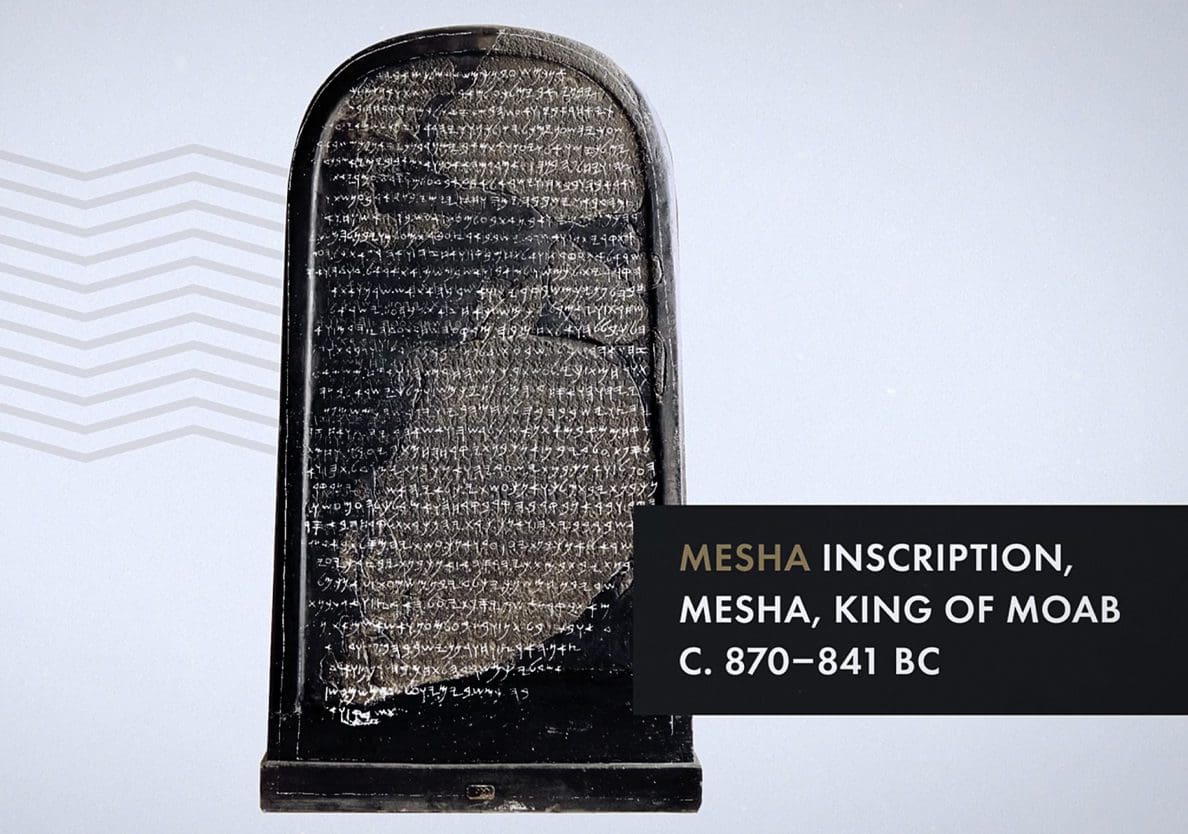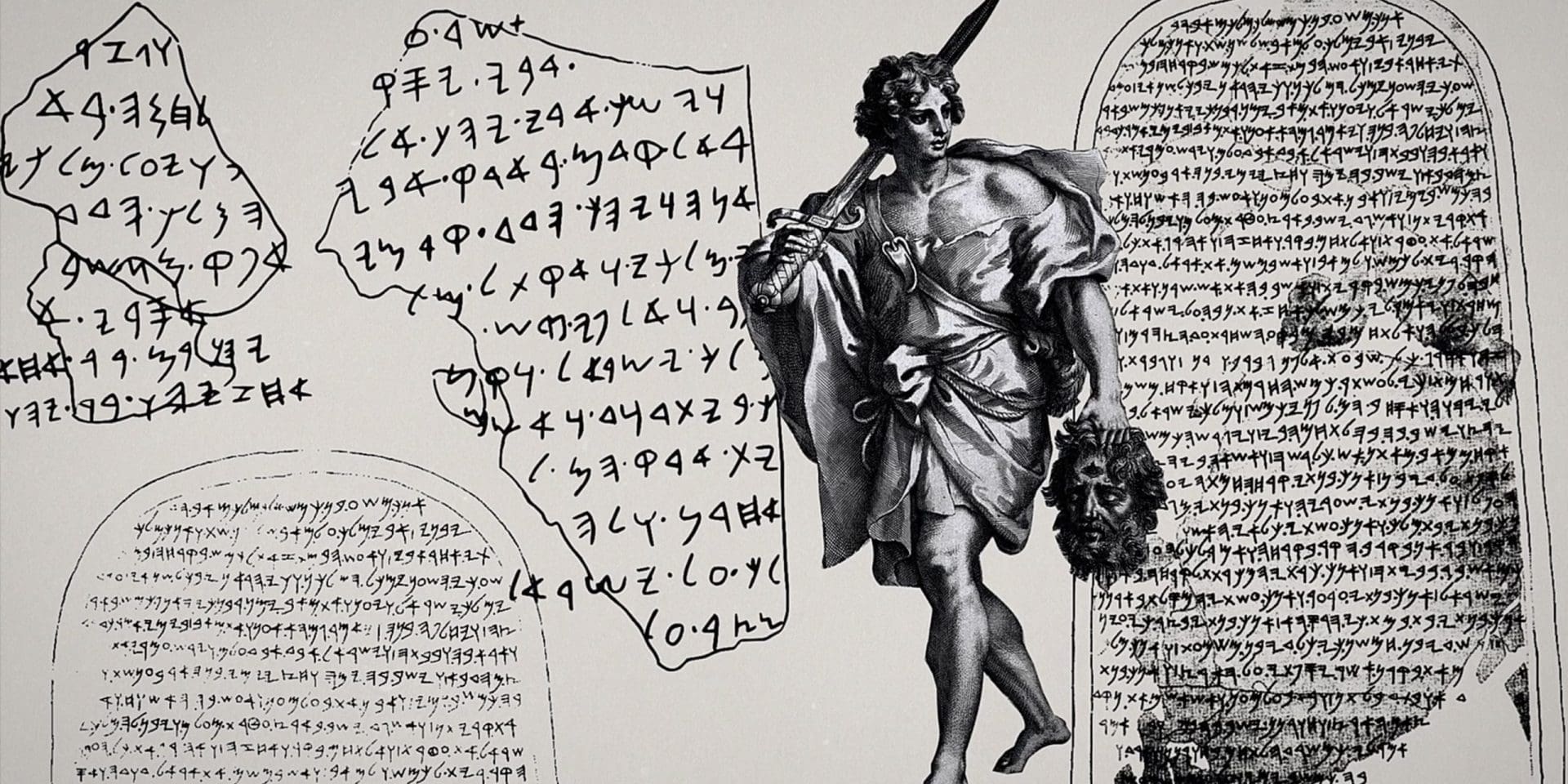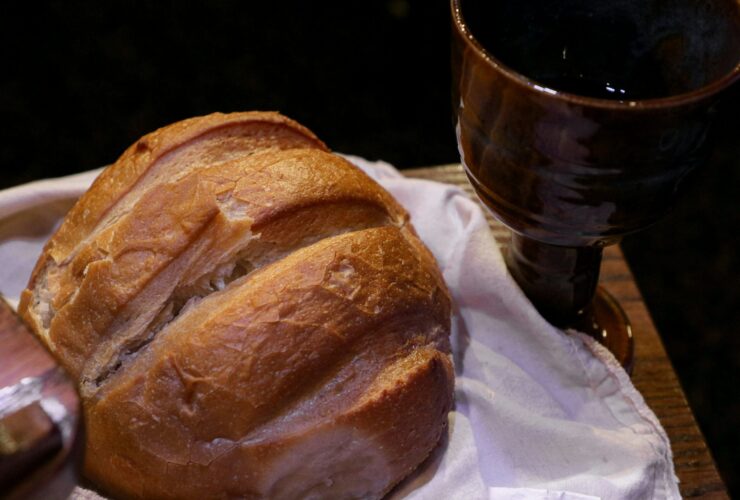That King David existed as a historical person was settled in the 1990s. The discovery of the partial remains of a monumental stele at Tel Dan, the first fragment in 1993, and the second in 1994, coincided with a re-examination of another monumental stele called the Mesha Inscription or the Moabite Stone. Both monuments were erected by enemies of Israel and Judah, and both mention the Royals of Judah, as belonging to the House of David. In a phrase like “House of David” the house is not a literal building but is metaphorical, referring to the dynasty of a founding father, the descendants of an establishing king. Famously, the Bible records that God promised to build David a house (2 Samuel 7:11-16), again meaning a lineage not a physical palace which, notably, David already had.
“The inscription commemorated his victories over Israel and Judah and would have stood in the gate of Dan for decades until the city was recaptured by Israel’s king Jehoash…”
The Tel Dan Stele is named for the city it was discovered in (Tel Dan); we know it today only in part from the fragments found in secondary use in the early 90s. Scholars deduce from its contents and age that it was written by Hazael of Damascus (842-800BC)[1]. An Aramean king of the city state of Damascus that is featured heavily in the Bible (2 Kings 8, 10, 12, 13), and had great success warring against Israel and Judah. The inscription commemorated his victories over Israel and Judah and would have stood in the gate of Dan for decades until the city was recaptured by Israel’s king Jehoash (2 Kings) and likely at that point smashed into its fragments and reused as building materials.[2] It’s fragments today records whole, partial and implied names of several Biblical kings (Joram, Ahab, Ahaziah, Jehoram, Jehu, Hazael, Ben-Hadad II), and lists the king of Judah as of the House of David.[3]
The House of David is also referred to in the Mesha Inscription, that records the same event from a different perspective as 2 Kings 3. This inscription was commissioned by Mesha king of Moab, enemy of Israel and Judah ruled by Joram (854-841BC) and Jehoshaphat (870-848BC).[4] The inscription also mentions Omri (1 Kings 16), verifies that Chemosh was the Moabite national deity, and several other elements of Moabite territory mentioned in the Scriptures.[5]


Interestingly, there is also a disputed mention of David’s name recorded in a victory inscription of Pharaoh Shishak who attacked Judah during the reign of David’s grandson Rehoboam. This Egyptian inscription refers to a portion of Judah as the “Heights of David.”[6]
There are also several lines of physical evidence for David’s kingdom to be found in archaeological data from 10th century BC Judah. In a newly released study, scholar Yosef Garfinkel brings together excavation reports and archaeological surveys from four sites (Khirbet Qeiyafa, Khirbet al-Ra’I, Lachis, Socoh) to argue that evidence for a centralized government in Judah during David’s reign can be demonstrated.[7] Garfinkel believes that the core of David’s kingdom began with Hebron, Jerusalem, Khirbet Qeiyafa (Biblical Shaarim) and Beth Shemesh before expanding ever outwards. A picture that melds well with the Biblical account. Garfinkel’s excavations also revealed evidence for the architectural style of Solomon’s Temple in the form of a small shrine and for the Bible’s record of King Rehoboam’s building activities (2 Chronicles 11).[8]

Corie Bobechko is a daily co-host, speaker, and writer of Bible Discovery. She also hosts a YouTube channel that shows how history and archaeology prove the Bible. Her heart for seekers and skeptics has led her to seek truth and share it with others. Corie also has a Bachelor of Theology from Canada Christian College.
[1] Wood, 2011. https://biblearchaeology.org/research/topics/amazing-discoveries-in-biblical-archaeology/2233-the-tel-dan-stela-and-the-kings-of-aram-and-israel
[2]Wood, 2011.
[3] Biran, Avraham. “‘David’ Found at Dan,” Biblical Archaeology Review 20.2 (1994): 26, 28, 30–31, 33, 35–36, 39.
[4] Wood, Bryant. “Mesha, King of Moab” Bible and Spade (1996).
[5] Lemaire, André. “‘House of David’ Restored in Moabite Inscription,” Biblical Archaeology Review 20.3 (1994): 30–34, 36–37.
[6] Kitchen, K. A. On the Reliability of the Old Testament. Eerdmans, 2003.
[7] Garfinkel, Y. “The 10th Century BCE in Judah: Archaeology and the Biblical Tradition” Jerusalem Journal of Archaeology 1 (2021): 1-14.
[8] Garfinkel (2021), pp.147-148.






